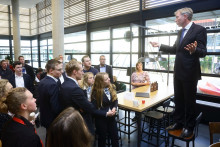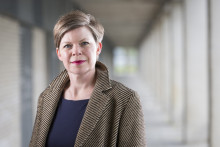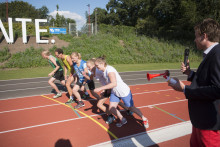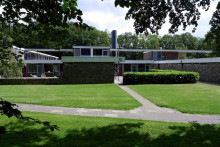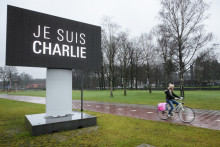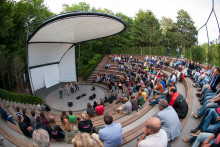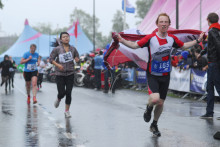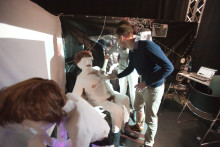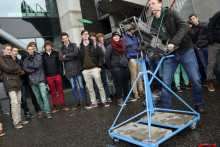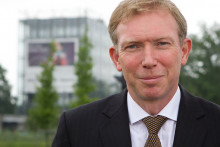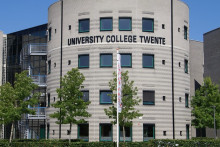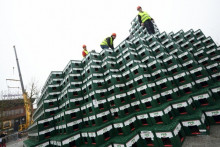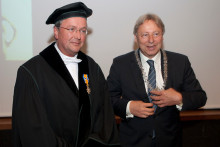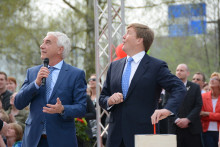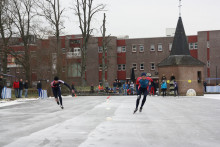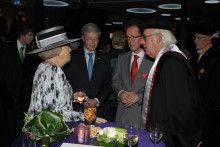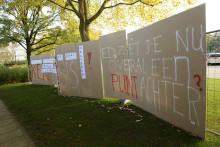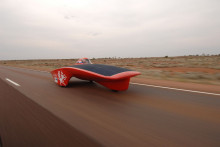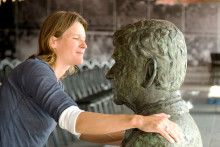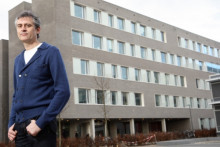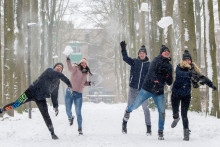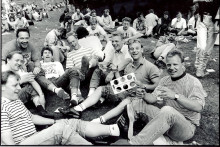In the sixty-year history of the UT there was not a single year without changes or adjustments. The same was true for the years 2011 to 2015. In fact, that period was full of large changes, but ask students, teachers and employees from this period about the most significant theme of that time and the majority will come up with a change that left no one unaffected: the introduction of TOM, het Twents Onderwijsmodel.
Ed Brinksma, rector magnificus at the time, recognizes this. From his modest room on the third floor of the Zilverling – the current chairman of the Erasmus University Rotterdam board is still affiliated to the UT as a teacher – he explains why TOM brings up so many memories.
All-encompassing
‘In those years we went from six to four research institutes, two faculties merged, ATLAS was founded, as was the DesignLab. These were all worth the effort, but TOM was so all-encompassing. It was introduced at the entire university. No one could avoid it. Many changes do not concern students much, but not this time,’ Brinksma reflects.
The five principles of TOM
- Education is offered in modules of ten weeks (fifteen ECs). Every module is finished in its entirety. The modules consist of different courses that are all coherent to one theme.
- Working on a project is the core of a module.
- Own responsibility. Students take control of their own learning process. Since modules are large blocks, it is important that students get regular feedback on their progress during the ten weeks.
- Collaboration between students. Students work in groups on their projects and collaboration is stimulated in the module courses.
- Quickly in the right place. All Bachelor programmes consist of twelve modules. The first two modules play a selecting and referring role, giving the students a clear picture of the nature and contents of the study within half a year. At the end of the year, students receive a Binding Recommendation (BSA) requiring the completion of three out of four modules.
Brinksma still remembers the motives for the TOM introduction very well. He sees a surprising contrast in these motives compared to today. ‘Students get burned out and are overloaded. The question is whether or not we are asking too much of our students. At the time, the government gave us the task to be stricter with our students. The intensity had to go up and the ministry wanted to see concrete plans.’
'I was forced to watch all those students that were enrolled without having earned a single credit. Where were those people? It was a confronting sight'
Digitization
According to Brinksma it was highly necessary to intervene. The UT was dropping in the national rankings to the mid-tier and the percentage of long-term students was far too high. Moreover, Brinksma believed, the UT had to prepare itself for the upcoming digitization. ‘Something had to happen. I was forced to watch all those students that were enrolled without having earned a single credit. Where were those people? It was a confronting sight. A lot of those students were marginalized and no one cared about it. It was as if they were living under a rock.’
The arrival of digitization could be applied within TOM in the introduction of projects. ‘We didn’t want to lose ourselves as educational institution. The time when lectures were the main form of passing on knowledge was over. Learning by doing had to be at the centre of education,’ says Brinksma.
The implementation and execution of TOM caused regular clashes at the University Council. Luuk Geurts was a representative of UReka at the time and remembers the arguments between the Coucil and the Executive Board well. ‘We received many signals that the implementation and execution of TOM was causing problems for students, employees and study programmes. We would like to adjust a number of aspects of TOM, while to the Board it was all or nothing. I accused them of having an inflexible attitude. Everything had to happen, and all problems were downplayed,’ says Geurts, who studied Business Administration at the UT.

Would TOM leave enough time for student activism? That was the Council’s and students’ largest concern. Geurts: ‘After the introduction of TOM it got harder to find students willing to take on a role in a board. The insecurity was enormous, just like the impact on student life.’
Brinksma understood the critique, but did not give in. ‘Real student activism did not suffer much. Surprisingly enough, students that were greatly involved with activism managed to keep up well. But there was a great diversity in what many students saw as a part of activism. You might wonder if that was right. Activism had to have added value.’
Compensation
The clashes in the Council were intense at times and could reach the boiling point, but the Executive Board did not change its course. ‘We simply couldn’t. It isn’t easy to convince everyone of a new vision, and at the time no one really knew what exactly to do. When you are setting up a new framework, you can’t immediately let it all go. I had to keep everything together, even though there were adjustments in the concept phase and later on. The biggest point of criticism was the requirement for a student to get sufficient grades for all courses, meaning that just one insufficient grade could make them fail the module. However, there was a possibility for students to compensate their insufficient grades.’
The introduction of TOM wasn’t the only matter of debate in the Council. Several programmes changed their main language to English and not everyone was happy about that. The fusion of the MB and GW faculties was impactful too. ‘And yet, these were debates that I look back on with a good feeling. Sometimes it was intense, but after a good discussion we always came out stronger than before,’ says Brinksma.

Geurts agrees. ‘But in hindsight I think that at times we should have been tougher as a Council. Sometimes it seemed as if there was permanent friction, but that was due to the many large changes in those years and often that wasn’t easy. Many of the motives behind the introduction of TOM were justifiable, but it was too rigorous for us.’
'I still support the main ideas. Every model needs to gradually change with its time and if that does not happen for a while – like it was the case back then – then it requires heavy maintenance'
Brinksma looks back at the period 2011-2015 with positive feelings. ‘It might sound pretentious since I was rector at the time, but the visibility and ambition of the UT increased in those years. We mattered again. The years before were definitely not bad, but the appearance of the UT had decayed. TOM definitely contributed to a new surge of energy on campus. Besides, it felt to me as if we somewhat returned to the educational idealism of the THT at the start. I felt the same pioneering mentality.’
And whether he would have acted differently looking back now? ‘I still support the main ideas. Every model needs to gradually change with its time and if that does not happen for a while – like it was the case back then – then it requires heavy maintenance. Times have changed so much already that I couldn’t say whether I would act differently now. I am pleased with the results nonetheless.’



